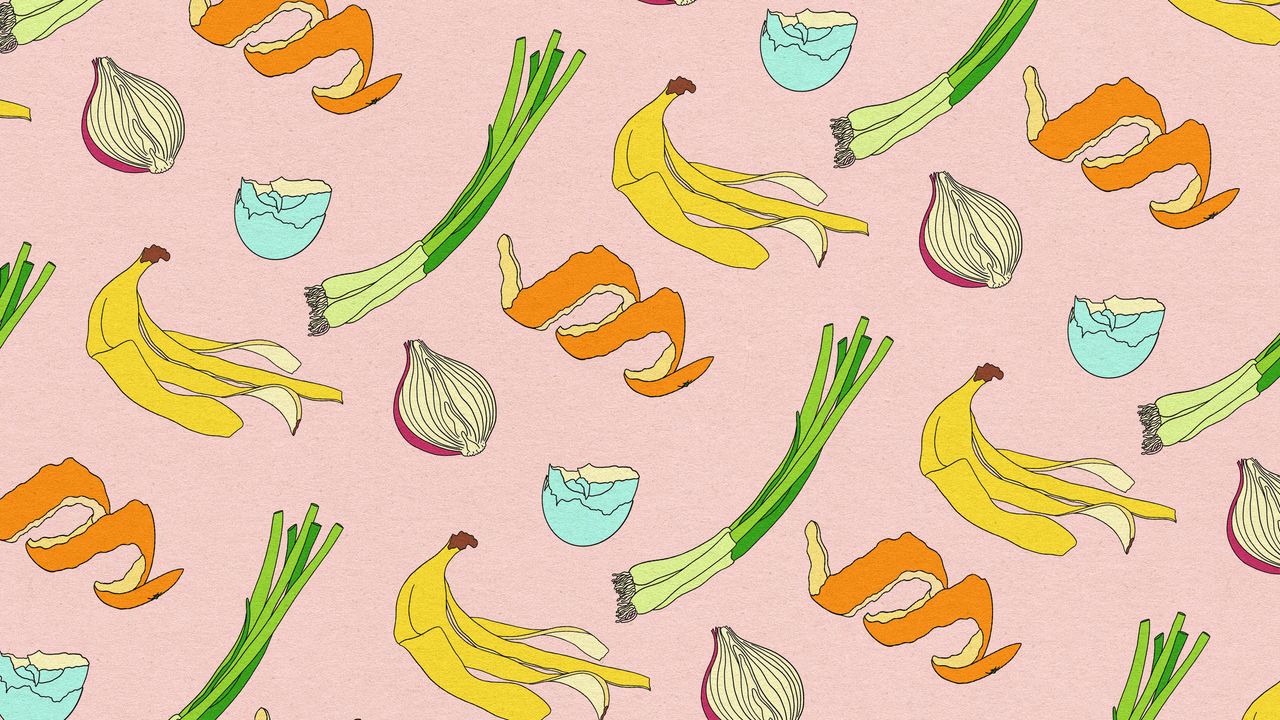But this bin isn’t all looks. The lid is vented and fitted with a charcoal filter to keep odors in check, and the bamboo handle makes it easy to carry your scraps out to the garden—or to your city’s green bin. It’s dishwasher safe, so cleanup is as low-effort as it gets, and the materials are fully compostable once the bin reaches the end of its (long) life.
- Material: Stainless steel
- Capacity: 1.7 gallons
- Lid style: Hinged door
Place this innovative product next to your kitchen counter and watch it fill up with scraps. The Mill isn’t exactly a compost bin, though, nor is it a modern-looking trash can. Instead, you put in your organic waste, it grinds and dehydrates them over the course of a few hours, and you’re left with Food Grounds, a soil-like end result that then gets shipped to a farm in Mill’s program to become food for chickens. In terms of ease of use, everything is controlled via app and a handy food glossary is included too, so you know exactly what can—and can’t—go in the Bin. The Mill, which has a $33 per month subscription fee, includes everything from the bin to unlimited boxes.
- Material: 100% post-consumer recycled polypropylene
- Capacity: 22 or 27 gallon
- Lid style: Sliding door
If your composting goals extend beyond countertop scraps and into serious backyard territory, the FCMP Outdoor IM4000 is a workhorse of a compost tumbler that Moniz recommends. Its matte-black, faceted barrel design feels more like a sculptural element than a utility bin—and it’s made entirely from post-consumer recycled polypropylene, so the sustainability credentials check out too.
“It’s very easy and convenient to use—just about any person can rotate it using their hands because its tumble design lets you get air into compost mixes with very little effort,” Moniz says. “It also has two chambers, which means that one of them can be ‘cooked’ while you fill the other with fresh scraps, making it ready for that perfect, uninterrupted flow of compost during the growth cycle.”
- Material: Stainless steel
- Capacity: 3.6 gallons
- Lid style: Hinged door operated by foot pedal
If you didn’t know better, you might mistake the Compost Genie for a sleek, stainless-steel garbage can. Inside, a 3.6-gallon bin is roomy enough for a day or two of scraps, even for a busy household, and it comes with compostable liners made from plant-based materials that are actually strong enough to handle the job. A built-in carbon filter cuts down odors (no whiff of yesterday’s onion peels), and the catch tray at the bottom pops out for easy cleaning—because even the tidiest compost bins need a rinse now and then. It’s also hands-free—just step on the foot pedal, and the lid lifts up—sparing you from touching it mid-meal prep. Overall, it’s a good beginner composter.
- Material: Plastic and metal
- Capacity: 2.5 liters
- Lid style: Twist-on
For those who love the idea of composting but not waiting around for usable compost, the Vitamix FoodCycler is a sleek little countertop appliance that turns food waste into dry, odorless fertilizer in a matter of hours. Think of it as a modern compost bin crossed with a high-efficiency dehydrator.
The compact unit has a streamlined footprint and a surprisingly quiet motor, making it a solid pick for apartment dwellers or anyone short on outdoor space. Toss in your fruit cores, veggie peels, and even eggshells, press the single-button interface, and the FoodCycler goes to work—drying, grinding, and cooling scraps into a nutrient-rich soil amendment that looks like coffee grounds. A charcoal-filtered lid keeps smells completely contained, and the removable aluminum bucket is dishwasher-safe for easy cleaning.
- Material: Stainless steel
- Capacity: One gallon
- Lid style: Detached lid
With its brushed stainless steel body and domed lid, this 1.3-gallon bin has a vintage kitchen canister vibe. Tucked discreetly beside a sink or nestled among a curated vignette of olive oil bottles and ceramics, the EPICA bin holds its own. Its fingerprint-resistant finish and seamless construction offer a clean, almost architectural presence—no clunky plastic, no garish branding, just elegant utility. Better yet, the activated charcoal filter hidden beneath the lid keeps even the most aromatic food scraps and other organic matter in check, and the airtight seal ensures that fruit flies stay out, keeping your kitchen fresh.
How We Chose the Best Compost Bins
To find the best compost bins available, we worked with experts—including Moniz, gardening expert and Rosy Soil founder Chad Massura, and Rebecca Louie, The Compostess blogger and author of Compost City: Practical Composting Know-How for Small-Space Living. Plus, we scoured the internet for highly rated options by gardening enthusiasts. Our picks are available at a range of price points to fit shoppers’ budgets, and we selected options made of sleek materials like stainless steel that are just as durable as they are design-friendly to fit a home’s design.
FAQs
What Are the Benefits of Composting?
In addition to reducing waste and redirecting organic materials from the landfill, making your own compost from food scraps produces good mineral soil for your garden. And while composting might have once evoked visions of stinky, rotting banana peels, buzzing gnats, or worms, today it’s actually tons of fun. Louie likens it to mixing a cocktail. “The good news is there are lots of options,” she says. “If you’re not necessarily into worms or don’t have an outdoor space, there’s something you can do.”

